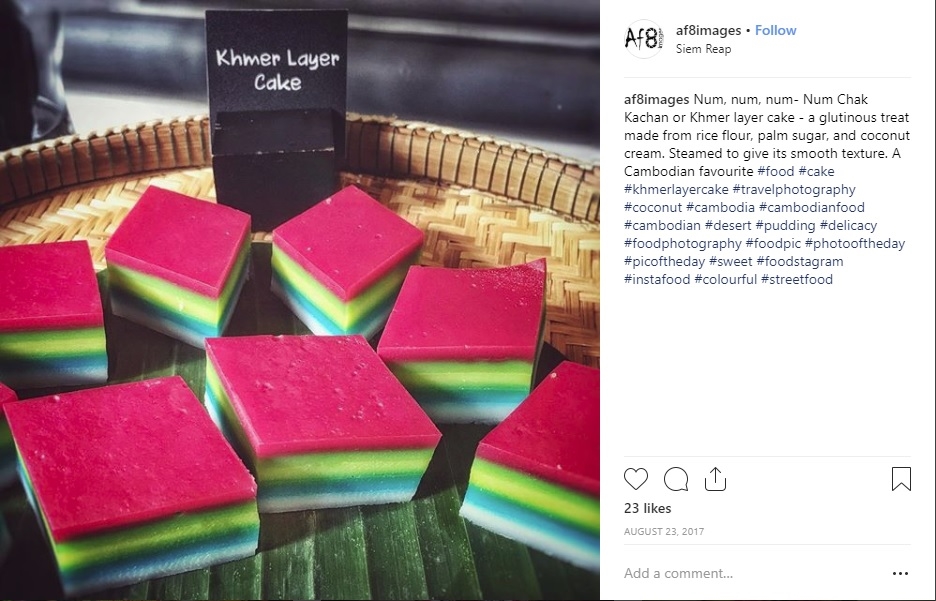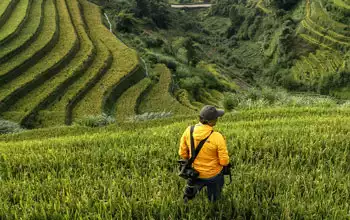If you’re anything like us, Channel 4’s Great British Bake Off either leaves you hungry for cake or desperate to bake! In celebration of the ever-population baking show, we’ve gathered together our favourite showstopper bakes from across Asia. You’ll find links to the recipes, in case you fancy giving them a try for yourself, or you can simple use this blog as a list of things to try on your holidays to China, Southeast Asia, India or Japan!
On your marks, get set, BAKE!
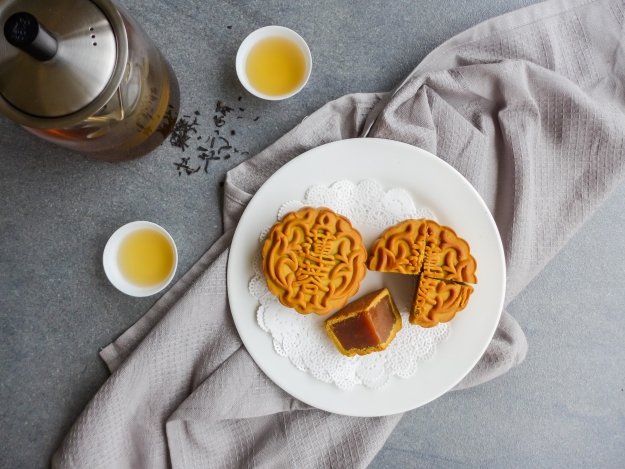
1. Mooncakes
A seasonal bake, mooncakes are traditionally eaten to celebrate China’s Mid-Autumn Festival. Round to mimic the full moon and to represent completeness, a thin layer of golden pastry envelopes a dense filling. For the traditionalists the filling should be a sweet red bean or lotus seed paste, alongside the salted yolk of a duck egg, though today, there are all sorts of exciting sweet and savoury fillings available. There are three pastries used to make mooncakes – chewy, made with sugar syrup, lye water, sodium carbonate, flour and oil; flaky, similar to a puff, made by rolling together layers of oily dough and flour that has been stir-fried in oil; or tender, like a shortcrust, made from sugar, oil, flour and water. Each mooncake is decorated with Chinese characters and intricate patterns and come beautifully boxed, making them the ideal gift. When consumed they should be sliced and washed down with lots of tea.
Find a mooncake recipe here.
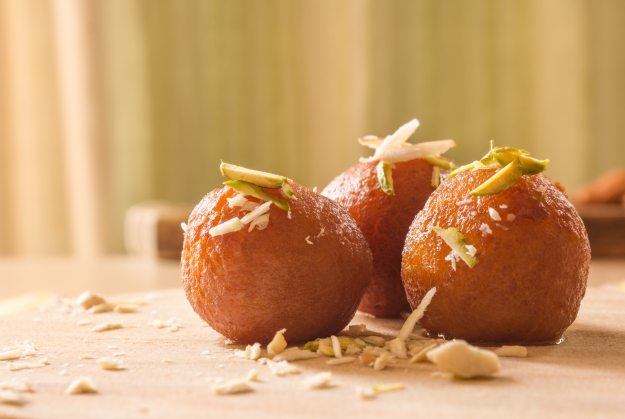
2. Gulab Jamun
This sticky, sweet Indian treat, said to be derived from the fritter, is consumed en masse at festivals, birthdays and celebrations. Gulab Jumun are traditionally made with ‘khoya’, a milk solid, which can be made by slowly evaporating the water content out of milk, forming a soft dough. When made at home, though, khoya is replaced with milk powder and ghee, a handy little cheat! Kneaded with a little flour, shaped into small balls and deep fried at a low temperature, a gulab jamun is born. Doused in a sugar syrup flavoured with spices like cardamom, rose water or saffron and garnished with dried nuts, these tasty delights are popular all over the Indian subcontinent.
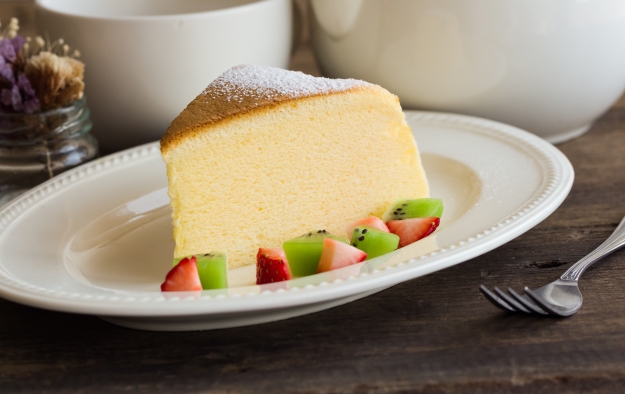
3. Japanese Cheesecake
Lighter and fluffier than its Western counterpart, more like a chiffon cake in fact, the Japanese cheesecake is a pillowy-soft sponge that originated in Hakata in the 1940s. It is the signature bake of the bakery ‘Uncle Tetsu’s Cheesecake’, founded in Hakata but with branches across Japan and in China, Singapore and Southeast Asia as well as Canada, Australia and the US. A heavenly combination of cream cheese, butter, sugar, whipped cream and egg whites, it is thoroughly whipped up and baked in a ‘bain marie’. Allegedly, a slice in only 200 calories, so you can indulge as often as you like – garnish with fresh fruit and matcha powder for a finished look.
4. Num Chak Kachan
A Khmer speciality bake, Cambodia’s num chak kachan is a super sweet and sticky layer cake. Traditionally eaten at Buddhist celebrations and festivals, food colouring is used to give the cake’s layers vivid colours, particularly green and red. The sponge layers of a num chak kachan are made from a combination of rice flour, tapioca flour, coconut cream and palm sugar – each layer poured into a flat-bottomed dish and steamed before the next layer is added, giving the rainbow effect. After 4 or 5 layers, the whole cake is steamed until firm, and garnished with fresh grated coconut.
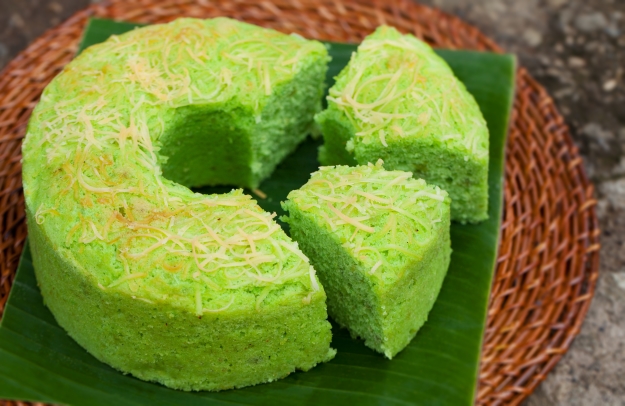
5. Pandan Chiffon Cake
The national bake of Malaysia and Singapore, this light, moist sponge flavoured with pandan paste has an aromatic, fluffy bite. Pandan paste is a flavouring extracted from leaves of the screwpine and gives the sponge, with the help of a little green food colouring, its distinctive, vibrant green hue. Made from egg whites, coconut milk, flour, oil, baking powder and pandan paste, the pandan chiffon cake is made the same way as any chiffon cake, using a special tin and being cooled upside down; the light texture and woody flavour of the pandan complement each other perfectly.
Find a pandan chiffon cake recipe here.
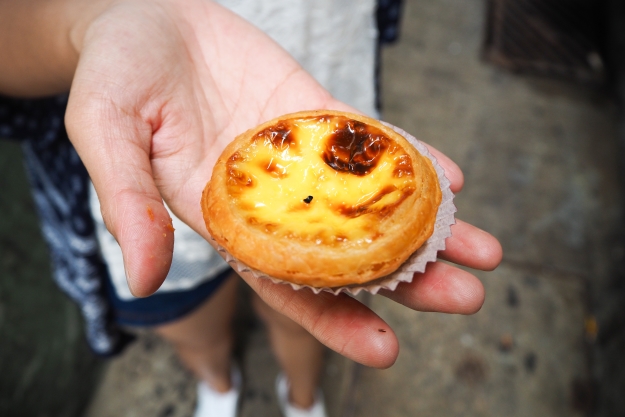
6. Macau Egg Tart
This bake has become Macau’s edible symbol in just a few short years – this version of the custard tart came into existence in 1989 at Lord Stow’s Bakery on Coloane Island. Here, Brit Andrew Stow combined the rich, thick custard of the traditional British egg tart with the delicious buttery, flaky pastry and crème brulee top of the Portuguese pastel de nata and voila, the Macau egg tart! The Macau egg tart became increasing popular over the following decades to become the icon eat it is today. You can still visit the original bakery for an egg tart today, or one of the many branches and franchises around Asia.
Find a Macau egg tart recipe here.
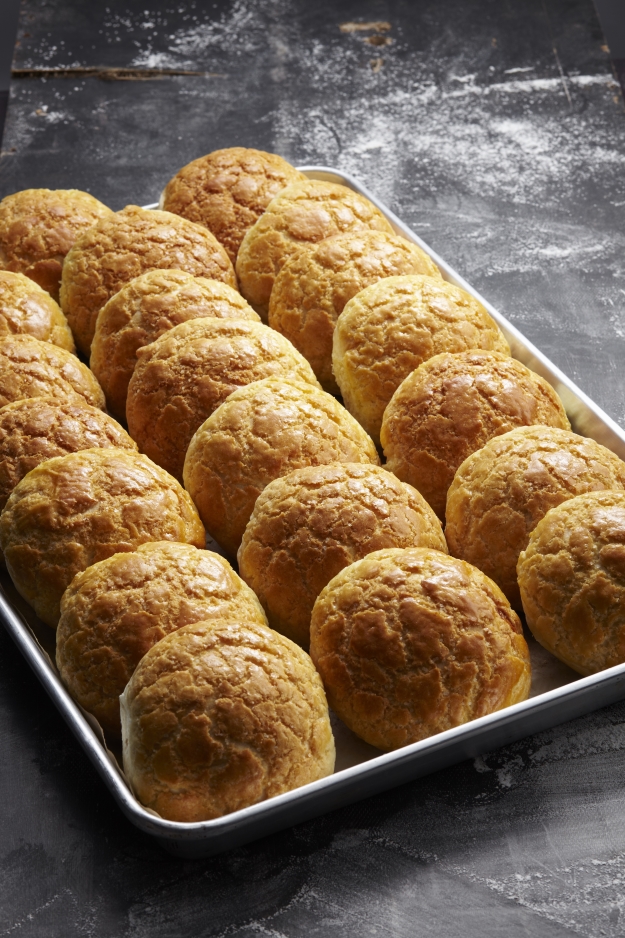
7. Pineapple Bun
Not containing any pineapple but resembling one, this tasty bake has been designated part of Hong Kong’s intangible heritage. A soft and sweet bread bun, made with lots of milk and cream, sugar, flour and yeast is topped with a sweet and crunchy biscuit dough made with sugar, eggs, flour and lard which, browned in the oven, gives that pineapple look. Whilst purist will stick to the bun described, some establishments serve their pineapple buns cut in half with a lump of butter in the middle or filled with custard.

